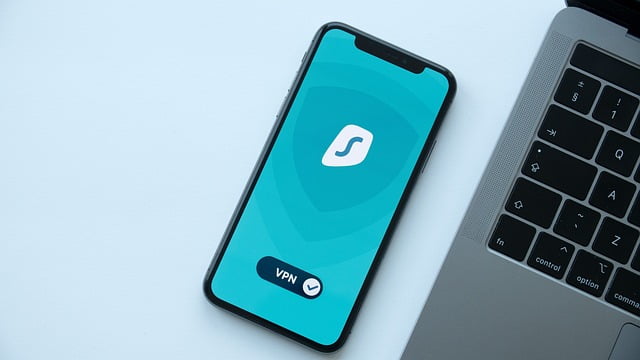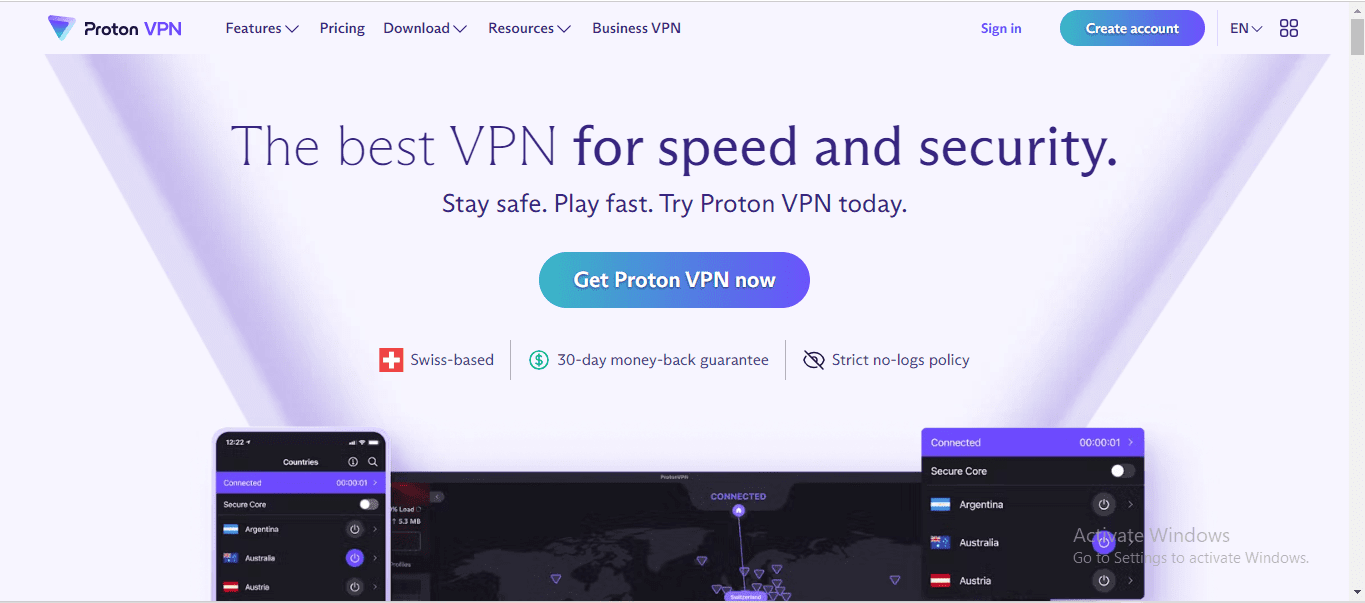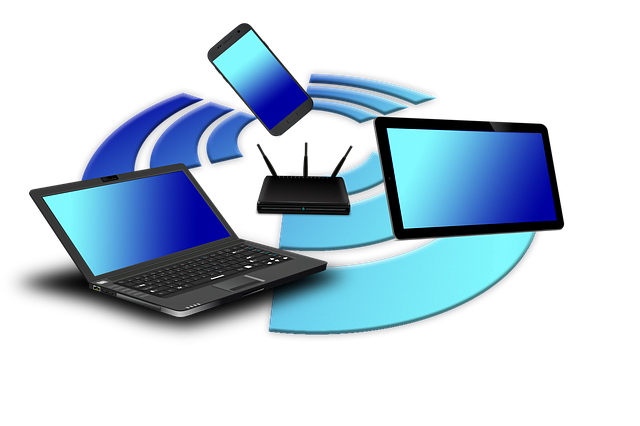Lisa Bock Course: Unlock Cybersecurity Secrets & Master Trojans and Backdoors! 2024

Lisa Bock’s Trojans and Backdoors Course Learning is just one of the few courses out there that gives you in dept insights about ethical hacking. Lisa Bock’s extensive knowledge in the world of cybersecurity translates the likes of Trojans and backdoors to a comfortable level Efor both noobs and experts.
This course sees learners get to know how Trojans and backdoors are in the system, and how to identify and prevent threats. These malicious tools should therefore be familiar to anyone who want to be a professional ethical hacker or who simply wants to get more knowledgable in the field of cybersecurity.
This implies that by the end of the course the learner will understand how his or her weaknesses are exploited by attackers as well as how he or she can protect his or her system against such weaknesses—Therefore, this makes the course very crucial to any learner in the cybersecurity profession.
Why “Lisa Bock Course” Is a Must-Have for Aspiring Cybersecurity Experts
Instead, the “Lisa Bock Course” is not a cybersecurity course, and it is not just a path to becoming a cybersecurity professional: it is the entry into today’s digital environment. Far from just offering theory, this course is filled with basic and advanced lessons including but not limited to Trojans, backdoors and network vulnerability. Students who insist on cybersecurity will be guaranteed practical knowledge, which they can apply on the job making them relevant in the market.
Regardless of whether you are a new completer or experienced cybersecurity professional in the making, Lisa Bock’s course is filled with critical and necessary information which will keep you captivated through to the last lesson.
How Lisa Bock’s Course Can Transform Your Cybersecurity Skills
Lisa Bock designed her cybersecurity course to help upgrade your technical expertise and enhance overall awareness of security issues. Focusing on such important subjects as Trojans, backdoors, and advanced security the course turns the academic knowledge into practical experience. Combining case studies with practical, lesson-by-lesson procedures, you will discover how to protect against security threats successfully.
It is most beneficial for the individuals who wish to transform from the basic level of using computers to the high-level security processes in their firms. The training from Lisa Bock regardless of whether you are getting into the field or are already working in it offer practical strategic information with tactics that you may apply now so as to thrive in today’s cybersecurity environment.
What Are Trojans & Backdoors in Ethical Hacking?
Definition of Trojans and Backdoors
- Trojans: In ethical hacking, Trojan is a program, which contains wrong or as well as destructive code, disguised beneath a legitimate program. It really is invoked to trick users into launching it meaning the system will be opened up for other kinds of exploitation. A Trojan always creates a gate for a hacker that has an opportunity to enter the program and perform unauthorized operations, such as the theft of personal information of the computer’s user, tracking the user’s activity, or installing other malware.
- Backdoors: Backdoor is a technique that is used by a hacker in a manner that they are able to bamboozle their way right through authorized access of a computer system. Back doors are sneaked in the system by Trojans or any unauthorised person for using the systems and to gain entry into the system withoutbeing detected.
Roles of Trojans & Backdoors in Real-World Cybersecurity Attacks
- Trojans and backdoors are actually very significant in the current real world threat attacks. Trojans are most preferred by hackers to get into a system and get them a backdoor to perform their evil act they fit well in legit operations. When the attacker is inside the system, they place additional backdoor for future access to the system, because the attacker can always violate new security measures added. Together, these tools are used to:
- Steal confidential data such as financial information and personal details.
- Monitor user activity, including keystrokes and screen captures.
- Establish control over the infected system to execute further malicious actions.
Chart: Different Types of Trojans
| Type of Trojan | Description |
|---|---|
| Remote Access Trojan (RAT) | Allows attackers to take control of the victim’s system remotely. |
| Data-Sending Trojan | Designed to steal sensitive information (passwords, files, etc.) and send it to the attacker. |
| Backdoor Trojan | Opens a backdoor for the attacker to return and control the system without detection. |
| Downloader Trojan | Installs other malicious software on the infected system. |
| Keylogger Trojan | Monitors and records keystrokes to steal login credentials and other sensitive information. |
| DDoS Trojan | Used to perform Distributed Denial of Service (DDoS) attacks by flooding targeted systems with traffic. |
Comparison Between Trojans and Backdoors
| Aspect | Trojan | Backdoor |
|---|---|---|
| Purpose | Disguises itself as legitimate software to execute malicious code. | Provides a hidden entry point for attackers to re-enter the system. |
| Delivery Method | Often through phishing, fake software, or infected downloads. | Can be installed by Trojans, rootkits, or manual exploitation. |
| Detection | More detectable due to abnormal system behavior or antivirus tools. | Harder to detect; often hidden in legitimate processes or files. |
| Control | Gives initial access to the system for further exploitation. | Allows continuous access without the need for re-exploitation. |
| Primary Function | To gain access or deliver other malicious software. | To maintain access to the compromised system for long-term control. |
This section offers a foundational understanding of how Trojans and backdoors are used in cybersecurity attacks, setting the stage for the rest of the blog/article while engaging readers with structured visuals like charts and tables.
Lisa Bock’s Unique Teaching Approach

Overview of Lisa Bock’s Teaching Style
The most popular characteristic of Lisa Bock is the ability to explain a material in a common language together with the detailed theory connected with the live examples. In her Trojans & Backdoors course, she gives the learners what may seem a little complicated at initial glance in easy steps. Carefully and detailed, she is able to make the learners understand cybersecurity regardless of the level they are in.
Another thing which she underlines is the practical work to work for the regularities’ comprehension. Unlike introducing academic terms in a smooth didactic manner, Bock really practices and enforces exercises which possess direct positive impact using cybersecurity tools and techniques. She uses live examples, case and fast moving lab to explain how to detect and prevent Trojans and back doors in various platforms.
In a similar manner, she also draws diagrams, flow charts, and attack simulations to help the learners understand how Trojans as well as backdoors work. Also, students without exception find it easy to grasp the concepts that are taught this way the knowledge that is gained can easily be applied when solving real-life problems in the malecybersecurity field.
Why Her Course Is Valuable
As for the academic products like Lisa Bock’s course, they will rather be useful for those ones who searching for the with non-theoretical information about Trojans and backdoors threat. For the reasons stated above, this course is informative to ethical hackers I.T professionals, and cybersecurity enthusiasts too since it does not only discuss the given theories but also how to apply the theories in real-life daily cybersecurity encounters.
The author focuses on the sides of the problem solving by describing to his students how they have to find voids in system and networks. By the end of the course, students will have a comprehensive understanding of:
- How attackers use Trojans and backdoors to infiltrate and control systems.
- The methodologies to prevent and mitigate these threats.
- The role of ethical hacking in maintaining the integrity of systems and networks.
Key Takeaways from the Course
- Analyzing the Threat Landscape: In the course, the author discusses the dynamics of threats that is Trojans and backdoors. Students discover how one can predict an attack by studying hacker’s tactics, techniques, and procedures (TTPs).
- Identifying System Vulnerabilities: Bock demonstrates to students ways of detecting system vulnerabilities that are prone to Trojan and backdoor invasion. This comprises of an experience in operating assets like vulnerability scanner and penetration testing tools.
- Developing a Defensive Strategy: This section explains about how to keep out Trojans/backdoors for example using firewalls, IDS solutions and encryption methods.
- Learning Ethical Hacking Tools: A key part of the course is hands-on training with ethical hacking tools and techniques. Students will get acquainted with tools like Wireshark, Metasploit, and Nmap, essential for identifying and neutralizing Trojan and backdoor threats.
- Incident Response & Recovery: It also helps students understand how to handle a security breach that is caused by a Trojan or backdoor, aspects of system recovery that can be done in addition to patching to cover future similar threats.
Combining academic knowledge and hands-on practice, Lisa Bock’s course is among the most valuable in cybersecurity learning while arming learners with knowledge to fight contemporary threats.
How Trojans Work: A Step-by-Step Breakdown
A Trojan is still one of the most dangerous forms of the malicious programs because it is usually disguised as normal application. H(pow) They infiltrate systems for the grants full access to such a person or control of the system or another spot where the hacker can resume criminality. Here’s a step-by-step breakdown of how Trojans infiltrate systems:
Step 1: Delivery (Infiltration)
The largest portion of a Trojan attack is initiated when the virus is installed in the target system. The Trojan is also typically delivered and executed by the user, and hackers use techniques of social engineering to compel the user to download it. Common methods of delivery include:
- Phishing emails: The user receives an email with an attachment or a link that leads to a Trojan download.
- Fake software downloads: Trojans are often disguised as legitimate software, such as antivirus tools or free apps, which users download unknowingly.
- Infected websites: Users visiting compromised websites can unknowingly trigger Trojan downloads via drive-by downloads.
Example from the Course: Inexperienced user by the name Lisa Bock relants a time when a user downloads a Trojan that looks like a system update from a website that looks harmless and may have been hacked. This step clearly reveals that social engineering is an important component in the completed infiltration step.
Step 2: Execution
When it is uploaded to the target computer Trojan operates in a hidden mode waiting for the user to execute it. Whenever the user opens what he/she thinks is a real file, the execution of the malware begins. At the same time Trojans perform its operations surreptitiously behind the scenes and therefore cannot be immediately detected.
Example from the Course: While teaching the course, Lisa Bock also shows how a Trojan, appearing as a PDF file or system update, does not seem to work once it is run, so that the user does not think they have been compromised.
Step 3: Establishing Control (Backdoor Installation)
When run, the Trojan most commonly installs a backdoor to the computer through which the hacker has access to the device. This in turn gives the attacker the free roam of the system with out the normal security measures being put in place and make a point of regressing the systems.
Example from the Course: Bock offers an example that explains how a RAT works; at the end of the backdoor phase, the attacker acquires privileges on the victim’s computer in which he can control proceedings of the files, become the monitor of the computer activity or install more malware.
Step 4: Command and Control (C&C)
Once backdoor is developed, the hacker can communicate with the infected system through the C&C sever at will. This server order the Trojan, for instance to lock information, type control or to infect more files into the system.
Example from the Course: Bock illustrates how hackers use the C&C server to issue commands for exfiltrating sensitive information from a victim’s system without being detected by the user.
Step 5: Malicious Activity
The Trojan therefore finally implements the requisite wicked acts of the malicious software. This can contains but not determines to password and credit card details, to give the full access of the system to other malicious process. Some Trojans include other malware like ransomware, spyware or the invaded device allows to conduct DDoS attacks.
Example from the Course: Lisa Bock uses cases to explain how unique Trojan were used in attacks are as well as how manipulative actions of these programs can be once they are in the system.
Step 6: Covering Tracks
Due to the fact that Trojans are sneak programs, they use techniques by means of which they remove themselves from the system. It can modify system files, terminate other security applications, or delete itself upon completion – there are very little traces left.
Example from the Course: In one example, Bock explains how a Trojan might disable antivirus software or alter firewall settings to remain undetected on a system for extended periods.
Ethical Hacking Techniques to Defend Against Trojans
Lisa Bock teaching her course on Trojans and Backdoors also discusses the matter of ethical hacking as a response to these threats. As minimal as Trojans are understood is ample, but it is understanding how best to confront them that defines the savvy cybersecurity personnel. Here are some key defensive measures and techniques covered in the course:
1. Implementing Firewalls and Intrusion Detection Systems (IDS)
- Firewalls act as the first line of defense by controlling traffic flow between networks. Properly configured firewalls help block suspicious traffic from entering a system, preventing Trojans from communicating with their Command & Control (C&C) servers.
- Intrusion Detection Systems (IDS) monitor network traffic for unusual patterns or known Trojan signatures. By analyzing traffic in real-time, IDS tools can detect and alert on malicious activity, giving security teams a chance to respond before any real damage is done.
Example from the Course: Lisa Bock demonstrates how to configure an IDS to detect Trojan activity by setting rules that flag unusual inbound or outbound traffic.
2. Network Monitoring & Traffic Analysis
The ethical hackers should reverse analyse the flow traffic to look for any strange source or destination in the event the flow traffic is trying to connect on to probably an unknown or probably malicious server should be a signal that the Trojan wants to connect on to its C&C server.
- Wireshark: A tool like Wireshark helps ethical hackers capture and analyze network traffic to spot any unusual activity indicative of a Trojan infection.
Example from the Course: Conciselyakis uses the case study method to demonstrate that hackers can use Wireshark to capture data packets which will alert them of any anomalous traffic that could indicate a backdoor is running in any system.
3. Vulnerability Scanning
There is that Trojans take advantage of that systems that may remain un-updated are those that have certain vulnerabilities. These types of scans normal practice for ethical hackers and they are capable of identifying these points of weakness before the actual intruders do it. Scanning, the ethical hackers are able to discover vulnerable points in a given software, application or network or network and shut such ugly openings that the hackers would opt for.
- Nmap: A commonly used tool for network exploration, Nmap helps identify open ports and services that may be vulnerable to Trojan attacks.
Example from the Course: Lisa Bock demonstrates how to conduct a vulnerability scan by using Nmap to identify and pinpoint possible vulnerability points before they are exploited online by Trojan.
4. Sandboxing and Malware Analysis
Sandbox: This can be used by ethical hackers in accomplishing and evaluating that particular files in the computer are harmless or not that causes harm on the computer. In this way they let these files be effected in a controlled environment and then they themselves observe how a Trojan acts without affecting the entire system.
- Malware Analysis: By reverse engineering a Trojan, ethical hackers can learn its functionality, and spread mechanism, and even trace it back to its origin.
Example from the Course: Bock introduces sandboxing tools and explains how ethical hackers can safely execute and analyze a Trojan’s behavior in isolation.
5. Endpoint Security Measures
The Trojans may sneak in through endpoint such as Personal Computers, Smart phones or internet of things. Lisa Bock is of the opinion that endpoint solutions should be put in place to detect, prevent and erase Trojans causing havoc in an organisation’s networks.
- Antivirus and anti malware programs are front line weapons in being able to detect known Trojans and prevent their further dissemination.
Example from the Course: Bock explain how EDR solutions can be used to monitor and quarantine malicious activity on a single endpoint preventing a Trojan from infecting a network.
6. Ethical Hacking Simulations & Penetration Testing
Another reliable way of finding out the level of vulnerabilities the particular system in question has is in a simulation of an attack or otherwise known as penetration testing. Ethical hackers then mimic the attacker and try to penetrate the system, evaluate the probable insecurity of the system to Trojan as well as Backdoor attack, and evaluate the same.
Example from the Course: The video example of the penetration test I will go by the example of Bock where he mimics Trojan and the purpose of which is to trigger the activity of the security team and just close the gaps that appeared to be penetrable.
7. Regular Software and OS Updates
In most cases, Trojans are noted to be exploiting unpatched software. Twoethics further suggested that the systems should undergo regular basic update, with security patches included. About all the above-mentioned software and application, it should be noted that their actualization should be started by the automated patch management tools.
Example from the Course: Bock shows how the ethical hackers can minimise the risk of Trojan infections through automation of patch management.
Key Benefits of Completing the Course
Key benefits of obtaining a completion for Lisa Bock’s Trojans & Backdoors course includes: Such skills as practical and marketable of the course, the certification privilege for the students that =armoring’ the students the modern threats. Here’s a closer look at the key benefits:
1. Gain In-Demand Skills for Ethical Hacking
In her course, Lisa Bock provides the audience with the general overview of what Trojans and backdoors are all about – two of the most valuable types of threats in the current security environment. By completing the course, students will:
- Master practical techniques to detect, mitigate, and prevent Trojan and backdoor attacks.
- Develop hands-on experience with industry-standard tools like Wireshark, Nmap, and sandboxing environments, which are crucial for cybersecurity jobs.
- Learn to apply ethical hacking principles to real-world scenarios, helping organizations secure their systems from malicious actors.
Real-World Application Example from the Course: Students are guided through the process of using tools to identify a Trojan infection, analyze its behavior, and mitigate the threat, replicating a real-world cybersecurity challenge.
2. Certification Advantages
At the end of the course, the student is awarded a certificate by a reliable learning platform such as LinkedIn Learning. This certification can serve as a powerful addition to any cybersecurity resume, showcasing a validated skillset in:
- Ethical hacking
- Threat mitigation techniques
- Defensive security strategies
Additionally, this course aligns with knowledge areas required for key certifications like:
- Certified Ethical Hacker (CEH)
- CompTIA Security+
- Certified Information Systems Security Professional (CISSP)
It will be beneficial for such students to gain the above mentioned certifications for enhanced employment opportunities.
3. Enhanced Career Opportunities
Choosing a career in cybersecurity, one should be aware of Trojans and backdoors as they are currently in great demand. Upon completing the course, learners will be equipped to apply for a variety of roles such as:
- Ethical Hacker
- Penetration Tester
- Cybersecurity Analyst
- Incident Response Specialist
Graduates will be able effectively address a rising threat of malware in organizations as assets to any ITs or security squads.
4. Hands-On Learning Experience
When it comes to what may be liked and appreciated in Lisa Bock’s course, there is one cognitive peculiarity that should be mentioned first of all: the practice-oriented approach. Rather than performing assignments based on hypothetical cases, students work on cases and complete practical labs that prepare them for opportunities in the cybersecurity field.
- Simulated cyber attacks allow learners to experiment with identifying and stopping Trojans and backdoors.
- Case studies provide valuable insights into real-world attacks and how ethical hackers can combat them.
5. Testimonials and Success Stories
Some of the learners have been able to successfully finish the course, and have practised what the course offered them in actual field. Here are some testimonials from successful graduates:
John S., Ethical Hacker:
“This course gave me the practical skills I needed to secure my organization’s systems from Trojan attacks. Lisa’s teaching style made even the most complex concepts easy to understand, and I immediately applied what I learned in my job as an ethical hacker. The certificate also helped me land my current role!”
Sarah K., Cybersecurity Analyst:
“After completing Lisa Bock’s course on Trojans and backdoors, I felt confident using tools like Wireshark and Nmap to monitor and protect my company’s network. I’ve since earned my CEH certification, and this course was a crucial part of my learning journey.”
Mark L., IT Security Manager:
“Lisa Bock’s course was exactly what I needed to take my skills to the next level. Her practical demonstrations and clear explanations of Trojans and backdoors helped me protect our network from a potential breach. I’ve already recommended this course to my colleagues.”
Summary of Benefits
- In-Demand Skills: Develop hands-on expertise with tools and techniques crucial for combating Trojans and backdoors.
- Certification: Earn a certificate that boosts career prospects and aligns with CEH, Security+, and CISSP certifications.
- Real-World Applications: Apply practical knowledge to real-world cybersecurity challenges.
- Career Advancement: Qualify for high-demand roles in ethical hacking and cybersecurity.
- Success Stories: Hear from graduates who have used the course to achieve professional success.
This combination of certification benefits, practical skills, and real-world application ensures that students completing the course will be prepared to take on the evolving challenges of cybersecurity.
Ethical hacking: lisa bock videos
To truly get to know something, especially well enough to be able to hack into it, you need to see what is out there, or to be more precise, what is ‘in.’ These are ethical hacking videos made by Lisa Bock that give insight into cybersecurity in general, and perhaps more significantly, how to detect and combat trojans and backdoors in the digital world. : In her interesting demonstrations, Lisa demonstrates how the ethical hacker is able to identify weaknesses and protect networks from abnormal penetrations.
These videos serve as a comprehensive guide for anyone interested in cybersecurity, whether you’re just starting out or enhancing existing skills. For a deeper dive into her lessons on ethical hacking, trojans, and backdoors, check out her video series here.
Why You Should Enroll Now!

Interested in the next step up from traditional cybersecurity courses? Lisa Bock’s Ethical Hacking: Trojans & Backdoors Course provides you with hands-on training and realistic information required to prevent Trojans & Backdoors threats. No matter if you are a complete beginner to ethical hacking or want to add more certificates to your profile, this course is your ticket to success.
Don’t wait—unlock the secrets of ethical hacking today!
🔗 Learn more about the course and start your journey for exclusive insights, bonus materials, and limited-time offers that will give you a head start in your cybersecurity career.
Subscribe vpnsuggest.com now for in-depth reviews, expert advice, and the best resources to excel in the world of ethical hacking!
Conclusion
In the course of the career it is vital for the would-be ethical hacker to understand what a Trojan and a backdoor is. These malicious threats are not threats to the computers but threats to data, organizations and their entities. Therefore, by learning these techniques to identify, assess, and counter these cyber threats you place yourself to compete for the skilled job opening in this booming field of cyber security.
Completing Lisa Bock’s course on the subject of Trojans and backdoors improves one’s knowledge of the security threats on the one hand, and enhances the status of an ethical hacker, making him or her a valuable asset in the current world with growing technology on the other hand.
Read more: How to Stop Websites from Detecting Your VPN
Read more: Router with Built-in VPN vs VPN App: Which is Right for You?
FAQs on Lisa Bock’s Ethical Hacking: Trojans & Backdoors Course
1. What is the focus of Lisa Bock’s Ethical Hacking course?
Especially, the course by Lisa Bock discusses two major threats in cybersecurity – Trojans and backdoors. Such knowledge consists in how these unsafe agents act, how systems cope with them, and, correspondingly, how efficient hackers can track them and safeguard assets from them.
2. Who is this course suitable for?
This course will be appropriate to ethical hackers, cybersecurity employees, and Information Technology personnel that have an interest in enhancing their understanding of threats and protection techniques. This one is also good for learners with or without prior knowledge of ethical hacking.
3. Will I receive a certificate upon completion?
Yes you receive a certificate from the platform for instance linkedin learning ‘which of course will assist you or is useful when you are aspiring for that higher position in your job in the security realm.
4. How long does the course take to complete?
Because of such an arrangement, the course is arranged in a way which can easily fit any time table. That could take at most few hours depending with the experience of the learner as well as the level of mastery rated for a particular lesson.
5. Are there any prerequisites for this course?
There are no assumptions to make about the learners themselves: however, before participating in the course, certain level of understanding of networking as well as cybersecurity will be useful. Having knowledge about ethical hacking is slightly useful but it’s not always necessary.
Loading newsletter form...






